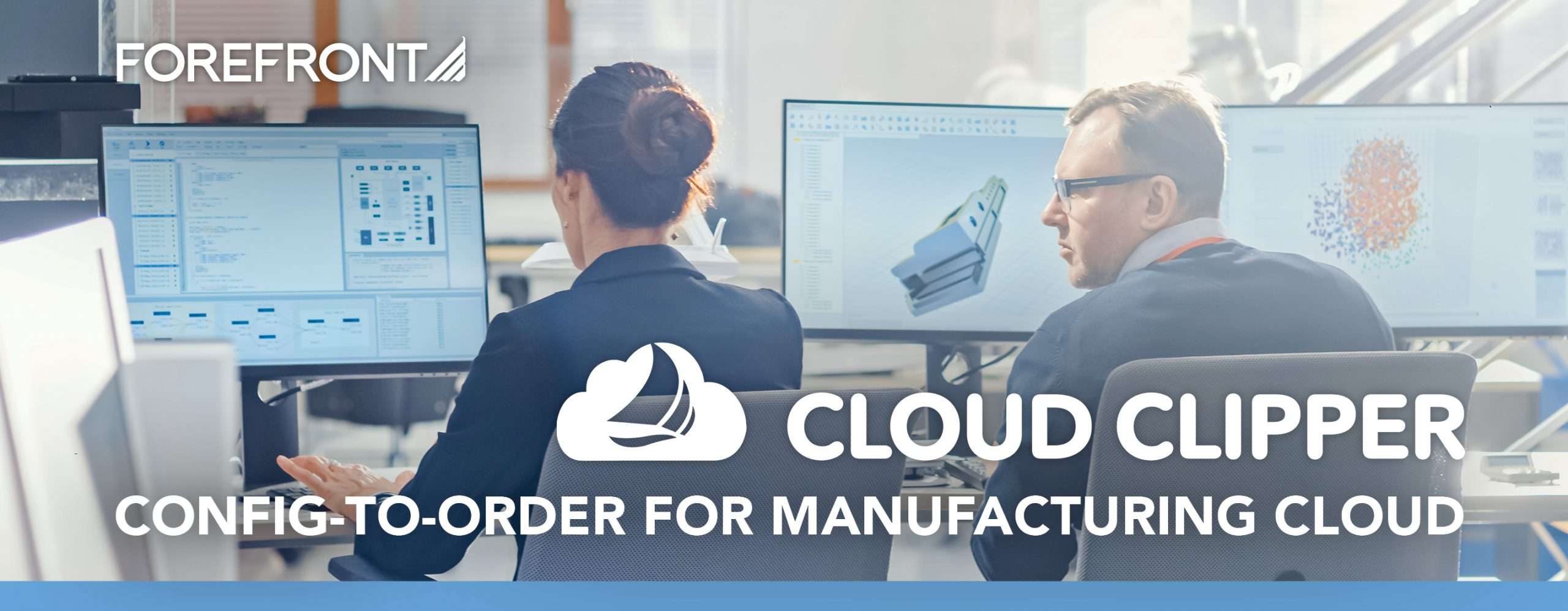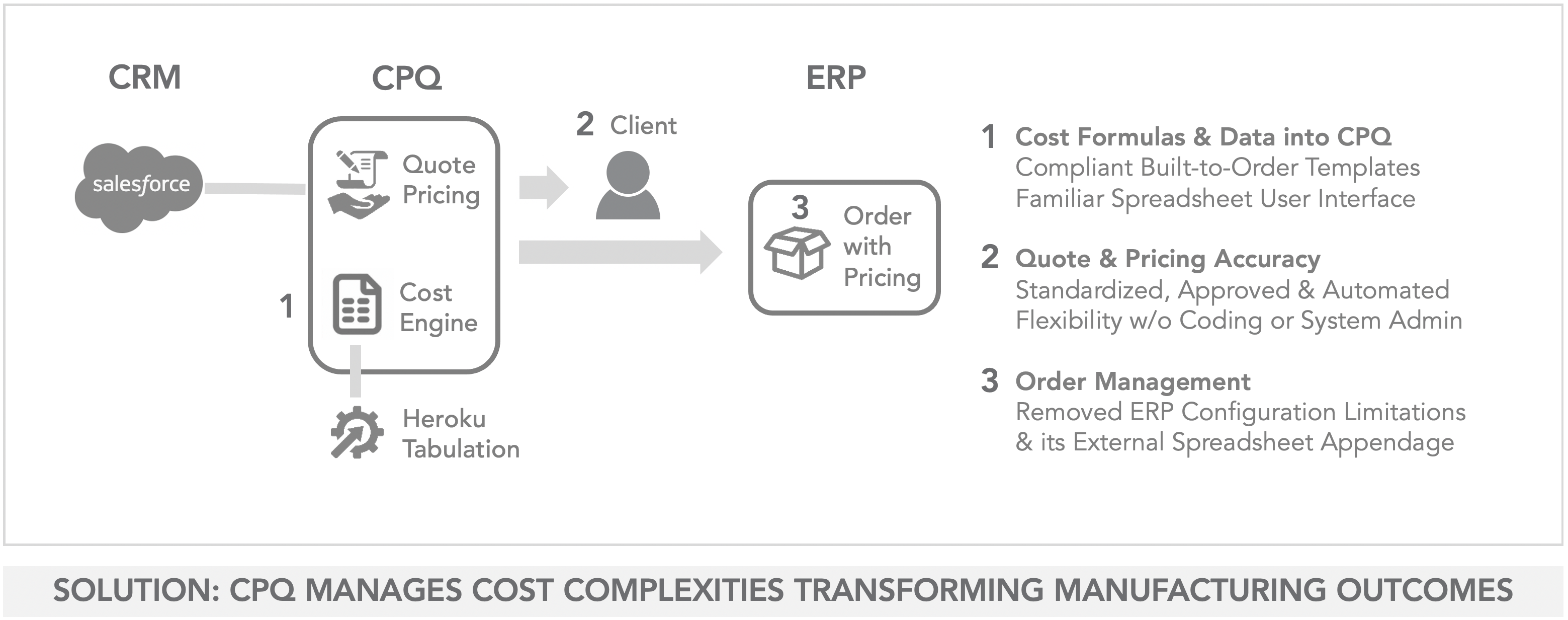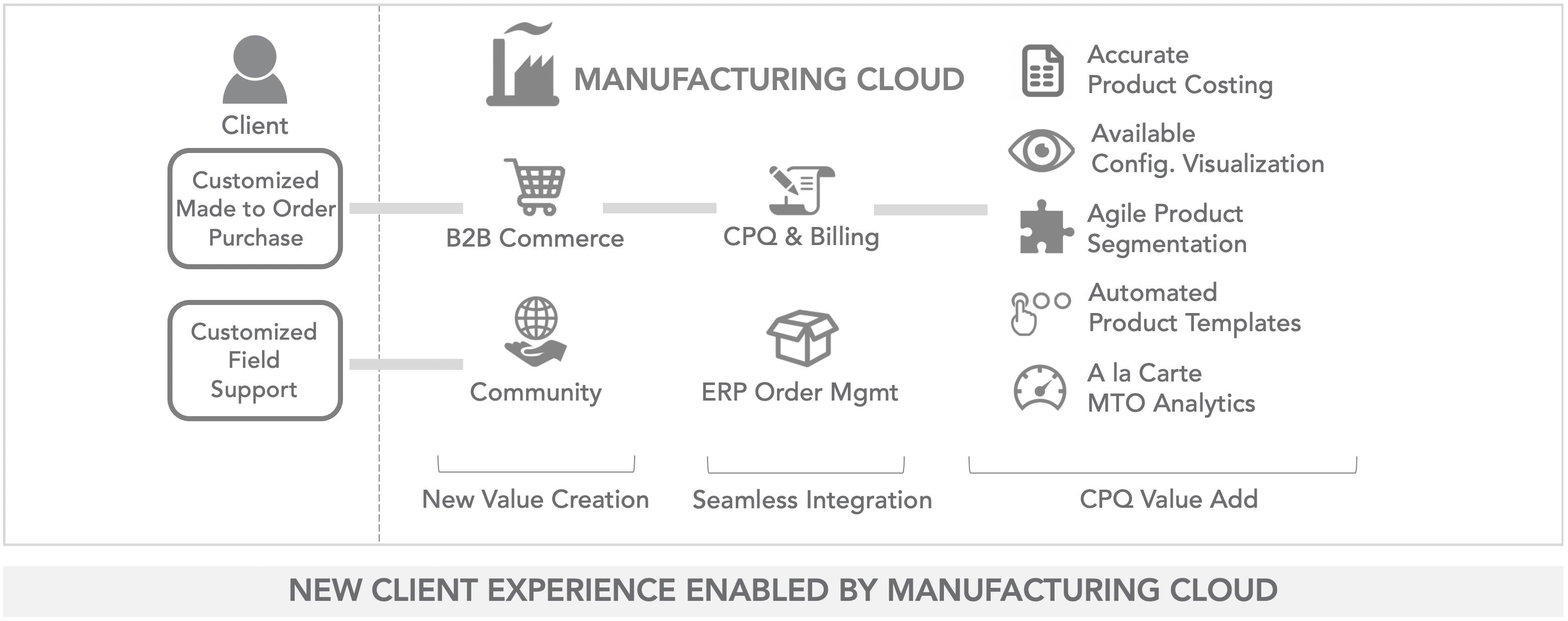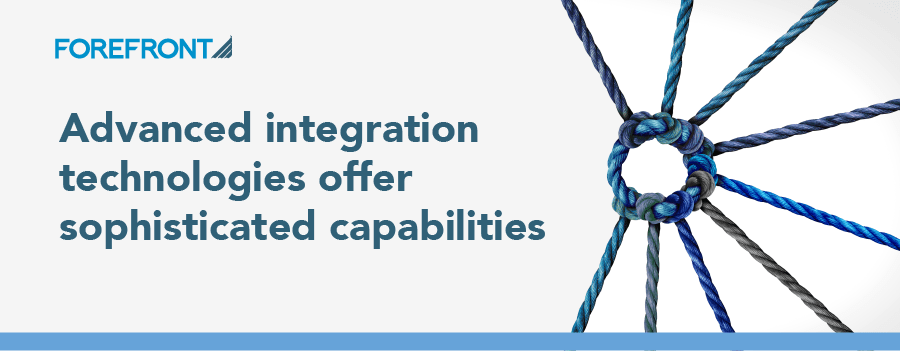One aspect of Digital Transformation for Manufacturers is to evolve their production strategy for Made to Order (MTO). This new competitive frontier requires a product customization ‘on-demand’ solution that is CPQ-enabled, where upstream product-build cost accuracy and custom config-to-order visualization are more than ever a significant success factor.
For those manufacturers striving to be at the forefront – the payoff of ditching manual processes, to make complex products’ quote configurations and calculations streamlined and easier, is not one to underestimate.
CPQ Disrupting ERP Status Quo
Legacy quote configurators with their manual quote generation and review processes are being replaced by today’s cloud-based CPQ (Configure, Price, Quote) solutions. These CPQ’s make the sales process easier, faster, and more organized. They integrate with Salesforce CRM and existing ERP (Enterprise Resource Planning) systems to deliver automated, error-free quotes with improved discounts and approvals’ control and transparency. Therefore, a powerful CPQ solution is contingent on the data quality of the CRM and ERP systems.
CPQ for manufacturing, from medical devices to consumer-packaged goods, can be complex with multi-threaded supply chain cost variables to address. It is an issue shared across all production types – whether process, discrete or built-to-order. Complex product cost calculations are routinely developed and maintained in multiple spreadsheets, growing in numbers over the years with minimum oversight. But what happens when spreadsheets are wrong? Experts estimate 90% of them contain formula errors.
Legacy ERP systems, like SAP and Oracle, are monolithic by design, require continual IT involvement, and have limitations when it comes to product costing. For instance, SAP’s Variant Configurator (LO-VC) quoting module, used to value the production and material costs for profitability and management accounting, is highly tight and rigid with other SAP modules. As a result, there are limited ‘input’ and ‘output’ variance analysis options with a constant need for IT support due to the inherent complexity. Quote generation from a legacy solution with steps 1-4 is typically as follows:
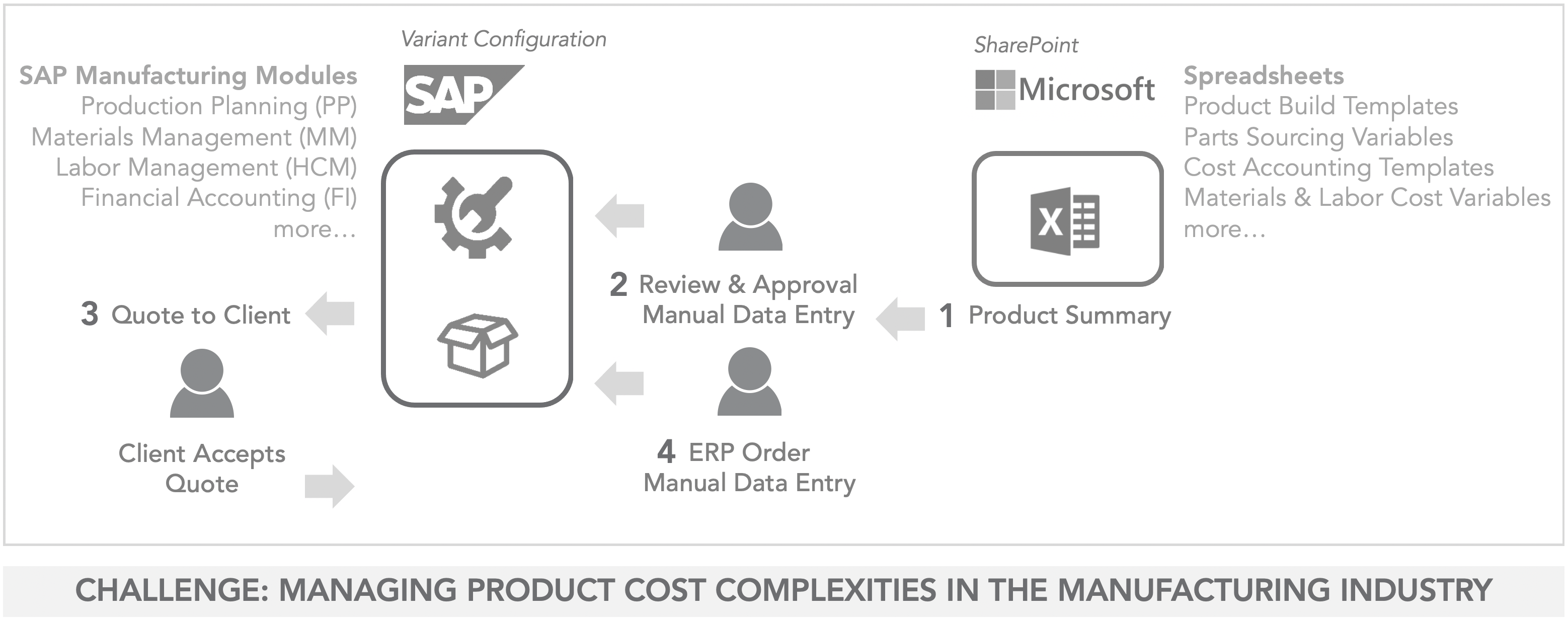
The emerging market trend to ‘Sell and Bill’ on one cloud platform is a forward-thinking approach. Sales teams get the necessary tools from CPQ, and Billing gives the accounting teams automated, timely invoicing and cash collection. However, pricing is only as good as upstream costing; a wrong formula, an inaccurate labor, material, equipment or plant location cost will impact the cost accounting chain outcome.
To be noted, CPQ handling a product with ‘x’ number of parts with ‘one’ price each is not the same challenge as a product with ‘x’ number of parts, each part with few dozens or hundreds of pricing variables!
CPQ Calculations Independence from ERP
Many manufacturers still depend on spreadsheets to run their product cost accounting. Having ‘external’ spreadsheets is a multi-faceted issue, from unauthorized changes to uncontrolled maintenance. Estimated vs. actual cost reconciliation against one or more data sources is manual, error prone, and inefficient. Additionally, cost trend patterns in spreadsheets are often difficult to incorporate into analytics. In other words, cost engineering spreadsheets should be part of CPQ rather than an external ERP appendage.
So, what is the big idea? It is to have a familiar spreadsheet look and feel, with a front-end interface customized to client’s needs and online capabilities to create templated product cost formulas – all within the Salesforce platform. Complex cost permutations and calculations are seamlessly handled with an innovative ‘Cloud Clipper’ engine on the Heroku platform. In summary, CPQ with its Cloud Clipper calculates the cost, generates the quote, and sends the order with pricing to the ERP as shown:

The merit of this approach is considerable. Existing Salesforce CRM data is up-to-date and readily available. Cost model formulas are maintained as data within Salesforce. To make formula updates, no need for a code change or system admin support. Any changes are automatically tracked and accounted for – who made the change, nature of the change, and when. Permissions and other native access controls are built-in. Any process analytics (e.g., Einstein) are available for other downstream business decision-making.
CPQ as a Catalyst to Manufacturing Cloud
The manufacturing industry depends on predictability, as its capital-intensive production facilities often have complex operations and supply chains that cannot be quickly or inexpensively modified. It is a challenge for manufacturers to meet today’s changing customer demands. Even more of a challenge when they adopt a new fulfillment strategy based on Made to Order (MTO) – a growing trend that allows clients to purchase products customized to their specifications.
In this case, production starts only after a customer’s order is received. It is a ‘pull-by demand’ supply chain operation, not the conventional ‘push-inventory’ MTS (Made to Stock). As a result, upstream product cost analysis and agile product segmentation become critical to CPQ’s Configure to Order accuracy. It is particularly true, as noted above, when manufacturing complex products with multiple parts, each part with multiple cost variables. A difficult scenario for an ERP to address effectively today.
Made to Order (MTO) production strategy offers new competitive advantages such as customization for customers, reduction in stock obsolescence, and finished goods inventory. This strategy (a.k.a. “mass customization”) succeeds only with accurate and timely product costs – therefore the importance of having cost and pricing capabilities within a CPQ solution. Other elements come to play as well, such as product visualization. To communicate complex product information visually is important in helping clients navigate through configuration options to find a product that meets their needs.
Insightful manufacturers understand the need for an end-to-end MTO business strategy as CPQ is to drive their B2B Commerce. To illustrate such opportunities with Manufacturing Cloud:

The same MTO strategy has made it more difficult to create value in traditional ways. Products become less objects of value in their own right. Instead, new value is created by providing the means of accessing and visualizing MTO configuration information (similarly for Engineering, Build or Assembly to Order). Value now resides with clients’ new experience in seamlessly customizing their products.
By narrowing the distance between manufacturer and consumer, allowing bypass of intermediaries, economies emerge with opportunities to generate new revenue models.
Bottom Line
Existing ERP assets can be wisely integrated with Manufacturing Cloud CPQ.
The initial step in a manufacturers’ Digital Transformation journey is to consolidate and migrate product build and cost data from an external ERP spreadsheet appendage to CPQ. Second step is to assess manufacturer’s readiness for today’s new ‘pull-by-demand’ business production strategy. Third is to take readily available customer data from multiple disparate sources to create a single, correct record of truth into CRM. Finally, now having a 360-degree view of the clients’ every interaction, CRM provides the foundation for new product insights, new service offerings, and new analytics-driven efficiencies.
Sounds simple, but it is not!
For Any Complex CPQ Needs, Contact Us!
B2B Commerce | Q2C Quote-to-Cash | ALM Asset Lifecycle Management
